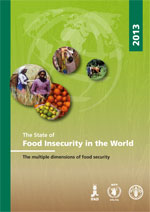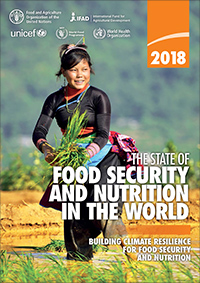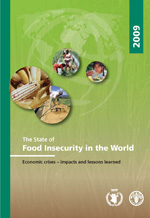Publications
JUST RELEASED
The State of Food Security and Nutrition in the World 2025
Addressing high food price inflation for food security and nutrition
SOFI 2025 presents the latest data and analysis on hunger, food security and nutrition worldwide, including updated estimates on the cost and affordability of healthy diets.
This year's edition highlights how elevated inflation in many countries has undermined purchasing power and, especially among low-income populations, access to healthy diets.
Digital resources
Previous editions


2023
Urbanization, agrifood systems transformation and healthy diets across the rural–urban continuum


2021
Transforming food systems for food security, improved nutrition and affordable healthy diets for all























